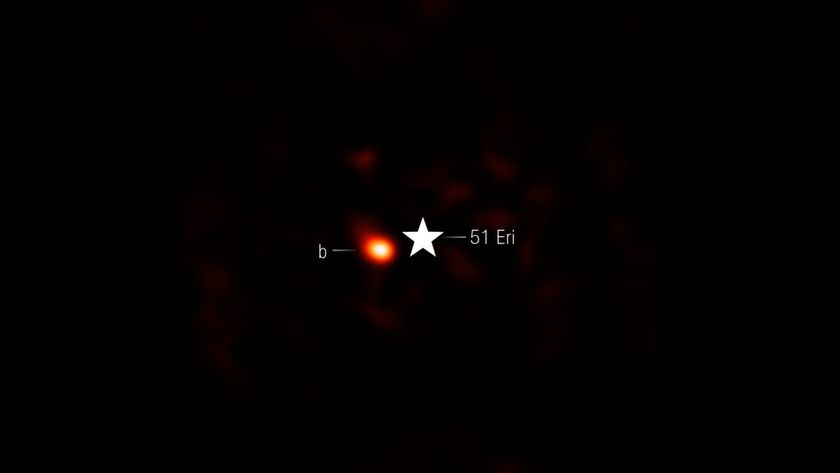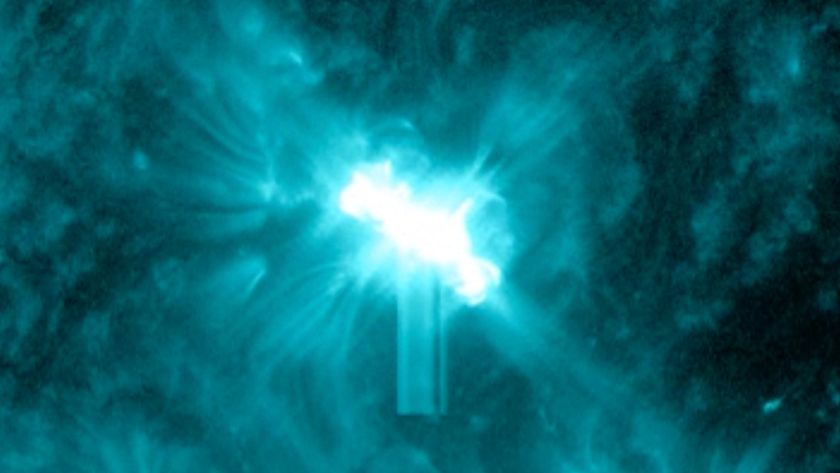Sierra Nevada Unveils 'Shooting Star' Cargo Module for Dream Chaser Space Plane
CAPE CANAVERAL, Fla. — A shooting star has landed here at NASA's Kennedy Space Center (KSC).
Ahead of the first planned launch of its Dream Chaser spacecraft (scheduled for sometime in fall 2021) Sierra Nevada Corp. — the company behind the small, space shuttle-like vessel — recently delivered a test article of its cargo module, dubbed Shooting Star, to KSC.
The Shooting Star is a 15-foot (4.6 meters) module that will attach to the aft (or back) portion of the Dream Chaser and provide room for an additional 10,000 lbs. (4,500 kilograms) of cargo — both pressurized and unpressurized.
Video: Dream Chaser - Launch to Landing in Awesome New Animation
Related: Meet Dream Chaser, a Private Space Plane (Gallery)


Unlike the Dream Chaser space plane, the cargo module is not meant to be reused, so it will burn up during reentry, disposing of trash and other unwanted materials in the process. The "shooting star" moniker is a nod to what the module will look like as it burns up in the atmosphere.
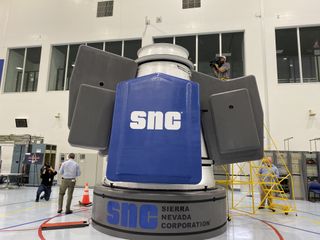
On Tuesday (Nov. 19) Steven Lindsey, a former astronaut and vice president of space exploration systems for Sierra Nevada, was here at Kennedy Space Center to unveil the new cargo module.
"The cargo module is really interesting because it's sort of the unsung hero of the whole Dream Chaser cargo system design," Lindsey said.
Get the Space.com Newsletter
Breaking space news, the latest updates on rocket launches, skywatching events and more!
He noted that the module has a unique shape. "It angles in as it goes up," he said.
This is because the vehicle has to fit inside the launch vehicle's payload fairing and carry unpressurized cargo, Lindsey said. He pointed to a series of gray boxes that were attached to the test article's exterior. According to Lindsey, the boxes represented external payloads, or payloads that can travel to the International Space Station (ISS) while attached to the module's exterior.
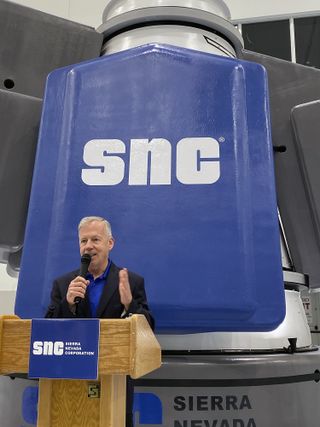
Each Shooting Star cargo module can support three payloads weighing up to 1,100 lbs. (500 kg) each or one payload weighing as much as 3,300 lbs. (1,500 kg). Once the module is at the station, the Canadarm2 robotic arm would unload the payload and install it on the station's exterior.
Each of those ports has power and data connections to support a variety of payloads, including small satellites that deploy in orbit. "You name it, we can carry it," Lindsey said.
During the event, Lindsey also announced that NASA has officially approved the first cargo mission to the ISS, which is scheduled for 2021. Lindsey said ground operations crews will use the Shooting Star test article to test loading and unloading procedures, ensuring that the design meets NASA requirements.
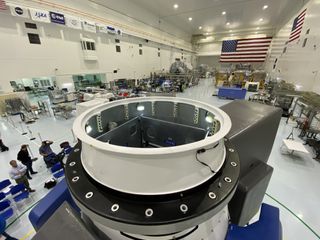
He reiterated what NASA recently announced: that the spacecraft will also be used to reach and resupply the Lunar Gateway, a moon-orbiting space station that NASA plans to use as a staging point for its lunar surface missions.
Sierra Nevada was named as one of the newly approved vendors that can bid on NASA's Commercial Lunar Payload Services contracts. For that to happen, the Dream Chaser will have to have its satellite bus attached, which means Dream Chaser will be able to participate in NASA's Artemis program.
The versatile vehicle can also serve as both a free-flying space station (with an inflatable module attached) and a means of servicing satellites in orbit. During the event, Lindsey revealed that Dream Chaser has the potential to boost satellites to a higher orbit, pull them out of orbit and potentially make repairs (with the addition of robotic arms).
Video: Inside Sierra Nevada's Inflatable Space Habitat
"This vehicle is perfectly suited for a variety of missions," Lindsey told Space.com. "Dream Chaser can dock, or it can berth; it's NASA's choice. So that means it has applications in both cislunar space as well as low Earth orbit, and even higher orbits."
Dream Chaser is set to become the next addition to NASA's fleet of cargo vehicles that launch supplies to the ISS. (The agency currently ships cargo to space using a combination of Northrop Grumman's Cygnus spacecraft and SpaceX's Dragon, along with Russia's Progress spacecraft and Japan's HTV cargo ships.)
Although the spacecraft was originally designed to carry humans, its first delivery will be a cargo resupply mission to the space station. Sierra Nevada lost out to SpaceX and Boeing when the company tried to bid on a contract from NASA to launch astronauts in 2014. However, in 2016, NASA selected Dream Chaser for its Commercial Resupply Services 2 contract, awarding Sierra Nevada a launch contract for six cargo missions to the space station by 2024.
The vehicle will launch and land from KSC, taking off on a United Launch Alliance Vulcan Centaur rocket. Company representatives said that if the still-in-development Vulcan wasn't quite ready to fly when Dream Chaser is, Sierra Nevada can send its space plane to the ISS atop an Atlas V rocket.
Video: Watch Dream Chaser Launch Atop Vulcan Rocket in Animation
Dream Chaser will land at the shuttle landing facility here at KSC — the same runway where its predecessor, the space shuttle, touched down. However, the plane can land on any runway in the world that can support a Boeing 737 airplane.
Because of its unique capabilities, the space plane will be a huge boost to scientific research, as experiments conducted on the orbiting outpost will return to the hands of ground-based researchers much sooner than is currently possible.
When experiments are carried to the ISS — which operates in low Earth orbit, a region from 99 to 1,200 miles (160 to 2,000 kilometers) above the planet's surface — they must remain there until the next cargo ship arrives, which could be several months later. According to Lindsey, Dream Chaser can shorten that time frame significantly.
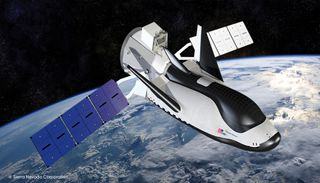
Sierra Nevada spokesperson Kimberly Schwandt said that once Dream Chaser has left the space station, any delicate experiments on board could be back on Earth in under 2 hours.
"As we like to say, wings are back," Schwandt said during Tuesday's event.
The Dream Chaser spacecraft is currently under construction and is scheduled to launch its first mission on behalf of NASA.
- Dream Chaser: Sierra Nevada's Design for Spaceflight
- Private Dream Chaser Space Plane Cleared to Begin Full-Scale Production
- Sierra Nevada Clears Dream Chaser Space Plane Test Milestone
Follow Amy Thompson on Twitter @astrogingersnap. Follow us on Twitter @Spacedotcom or Facebook.

Join our Space Forums to keep talking space on the latest missions, night sky and more! And if you have a news tip, correction or comment, let us know at: community@space.com.

Amy Thompson is a Florida-based space and science journalist, who joined Space.com as a contributing writer in 2015. She's passionate about all things space and is a huge science and science-fiction geek. Star Wars is her favorite fandom, with that sassy little droid, R2D2 being her favorite. She studied science at the University of Florida, earning a degree in microbiology. Her work has also been published in Newsweek, VICE, Smithsonian, and many more. Now she chases rockets, writing about launches, commercial space, space station science, and everything in between.










